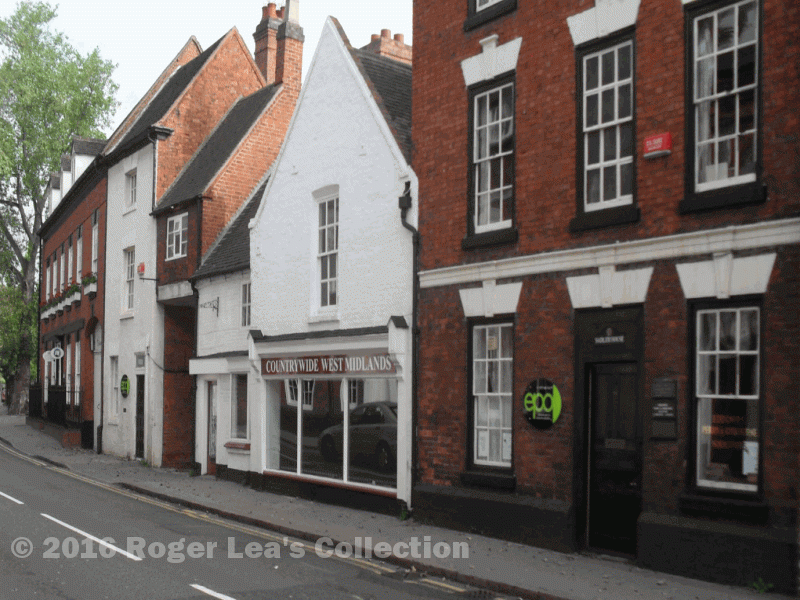Moat House in Lichfield Road was built by the architect Sir William Wilson in the 1690s. With its pilasters, balustrades, cornices and symmetry it showed Suttonians all the features of the new architectural style brought to England by Inigo Jones and Christopher Wren. The half-timbered and rough stone façades of the houses in nearby High Street were made to appear clumsy and old-fashioned by comparison.
Many of the houses in High Street belonged to leading local families, but the old stone or timber-framed buildings did not suit the taste of the time. Proportion and symmetry were the underlying principles of the new architectural language at the beginning of the eighteenth century, and in High Streets of towns all over England frontages were being simply ripped off and replaced with an elegant single-plane brick façade, filled with symmetrically arranged sash windows, and adorned with some tasteful classical ornament, such as a pilastered and pedimented doorcase.
Sutton Coldfield’s High Street was transformed in this way between 1700 and 1750, as owners vied with each other to give their properties a new façade in the latest style. Number 36 High Street is one of the most ornate, framed by stone pilasters (square columns projecting from the wall) with a stone pedimented doorcase, but the stone is the local sandstone which has worn away in places. A plainer façade such as no. 46 uses the harder and more decorative Bath stone for its lintels and cornices, but in this case the owner was unable to achieve perfect symmetry. The main element of the new façades was the Flemish bond brickwork, the bricks being made locally “out of a vein of clay which turns to an excellent red colour when well burnt; they are sold cheap, the price of them at the kiln being only half a guinea per thousand.”
A few old houses remained untouched, such as the timber-framed building demolished to make way for Railway Road in 1880, and the existing no. 48 probably looks much the same as it did 400 years ago. High Street is a Conservation Area, so its appearance should remain unspoilt by development, though the volume of traffic may shake it to bits.
